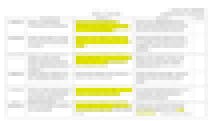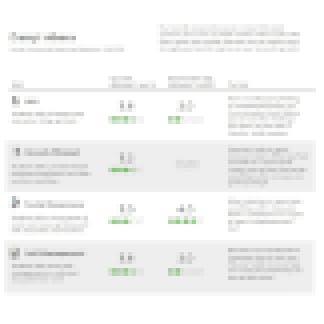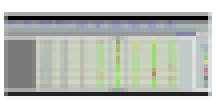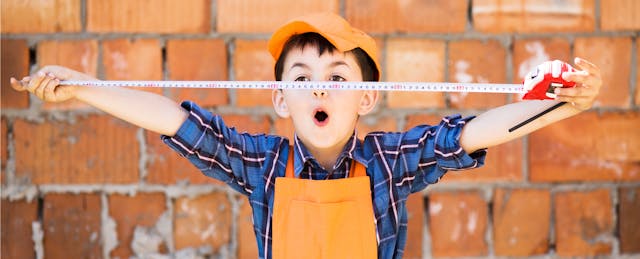Soft skills. SEL and MESH competencies. Habits of Heart and Mind. Whatever you call them, a growing body of research suggests these non-academic, social-emotional competencies deserve our attention. Studies have linked social-emotional learning (SEL) programs with improved focus, stronger relationships, lower anxiety and higher test scores. Even American political parties, at-odds about everything, agree SEL competencies play a vital role in the economic success of today’s students.
But as more and more schools recognize the importance of SEL curriculums—and with the Every Student Succeeds Act (ESSA) now allowing schools to choose a non-academic accountability measure—the question is being raised: Do we need to measure these competencies, and if so, how the heck do we do it?
This is the challenge facing educators like Edward Chen, the Director of Technology at California’s independent The Nueva School. The Nueva School has been teaching socio-emotional competencies since the sixties (originally billed as Self-Science). Today, they are committed to assessing students’ progress towards SEL mastery, which they see as essential to understanding where students are at—and to proving their SEL curriculum works.
But assessing non-academic skills, it turns out, is no easy task. Regardless, The Nueva Upper School team—along with a slew of educators and researchers across the country—are committed to finding out how to measure these key skills meaningfully. We take a look at how it’s going.
The hard work of measuring soft skills
At The Nueva Upper School, when it comes to assessment, standards-based grading is king. The school began using grades with holistic rubrics and written evaluations when they first started their new Upper School four years ago. They include not just academic standards, but several teacher-selected “habits”: responsibility, curiosity, creativity, and self-improvement. In other words, SEL competencies.

Teachers use these rubrics to evaluate students on a project-by-project and quarterly basis, with non-academic habits making up as much as 30 percent of a student’s final grade.
While The Nueva School has worked hard over the last four years to get these holistic evaluations online and adopted by all staff members, Chen says implementation is far from seamless.
For one, he explains, teachers want autonomy over both the skills they assess and how they assess them. A student’s English teacher, for example, may evaluate five habits through qualitative observation and make them worth 30 percent of a final grade. The same student’s Mandarin teacher, however, may decide the only non-academic skill she wants to tests is homework completion—which Chen points out isn’t even technically a habit.
“The biggest challenge in measuring SEL skills is having a true standard,” Chen explains. He says even if teachers could agree on what to assess, as many schools have, “there’s still a lot of room for interpretation. You can’t get away from subjectiveness of grading.”
So what’s a whole child educator to do?
Assessing the assessments
Bob LaRocca, Director of Policy and Communication at Transforming Education, is one of the people trying to figure that out. His Boston-based consultancy works with districts to identify relevant MESH (Mental, Emotional, and Social Health) skills, and disseminate tools to build and assess those competencies.
Right now, LaRocca says, there are two types of assessments on the market: surveys and performance-based assessments. Surveys are by far the most common, making up over 90% of available tools.
LaRocca’s team use surveys provided by Panorama Education, a company that offers tools to help schools collect feedback on students’ SEL skills (among other things). In addition to free paper surveys, the company’s Panorama for Social-Emotional Learning platform offers reports on individual students’ competencies across a range of categories—grit, growth mindset, self-management, emotion recognition. Districts working with Transforming Ed use the program to track students’ progress.

Students are asked questions such as, “How well do your classmates understand you as a person?” in order to measure social acceptance, and teachers are asked similar questions about their students.
As Edward Chen points out, these surveys are subjective. “You only have the side of the story which the student wants to show you,” he says. “That’s why you get students ranked advanced in one subject and struggling in another for the same habit.”
So should we give up hope?
Jeremy Taylor, Director of Assessment and Continuous Improvement at the Collaborative for Academic, Social, and Emotional Learning (CASEL) is committed to making SEL measurement tools more reliable.
Like Bob LaRocca, he supports districts trying to better address and assess SEL competencies. But he’s also passionate about finding alternative ways to measure these skills. His main focus? Performance tasks or direct assessment that rely on students’ demonstrating skills rather than surveys and self-reporting. It’s the difference between asking students to explain how well they think they’re doing in science and actually having them conduct an experiment.
“It’s not to say surveys aren’t valuable,” Taylor explains. “They give a sense of students’ progress. But because of ESSA, people are coming forth and asking about SEL as a 5th indicator. So we’re trying to figure out how to assess accurately and avoid pitfalls.”
For him, the most prominent concerns are around accuracy. But he also points out a slew of other issues including variability with student comprehension of questions; language barriers, even if questions are translated; the difficulty of self-reporting for children; and teacher biases.
As an alternative, Taylor and his team have created the Social-Emotional Competence Assessment Design Challenge; it asks developers to submit prototypes for direct assessments, rather than surveys and teacher-reports.
So what will the selected prototypes look like? It’s hard to say, because there’s not much out there. But Taylor says potentially something like SELweb, a performance-based SEL assessment tool EdSurge reported on earlier this year.
Unlike traditional surveys, SELweb is made up of online tasks that test skills directly. One task asks students to identify facial expressions in order to assess social awareness. Another provides a simple game with an intentional glitch built in. Self-control is measured by how long students are willing to persist amidst the mild frustration.

But this tool is also far from perfect. Some teachers report the tasks are repetitive for children, and analyzing the data can be complicated. But Taylor says this type of assessment is a step in the right direction.
For educators like Edward Chen, the shortcomings of current assessment tools are not the end-all-be-all. The most important thing, he says, is that SEL skills are being taught, and people are looking to improve how they’re measured. “We’ve been working on teaching SEL skills for five decades. We’re not going to quit now.”


